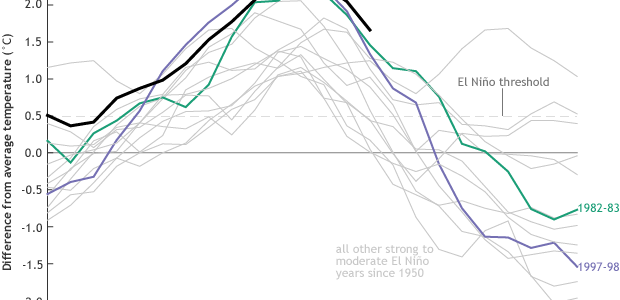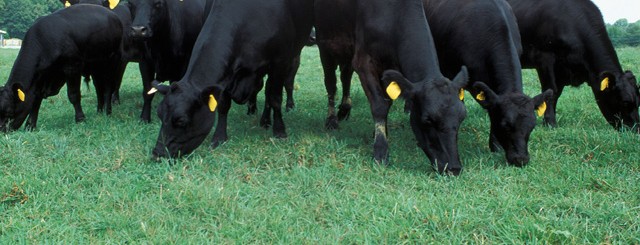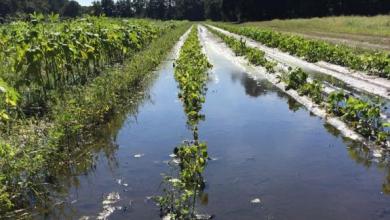El Nino and La Nina
-

NOAA’s latest El Niño blog post indicates that not only are we still in a strong El Niño but that they have also issued a La Niña watch for the next few months. I’ve been talking about the possibility of swinging from one extreme to the other in the past few months, and now it…
-

AgWeb posted a story this week on the negative impacts of El Niño on cattle herds in South Africa. Drought related to the phenomenon has reduced pastures and caused producers to eliminate cattle from their herds. The extra beef produced has resulted in a drop in prices which have negatively impacted beef producers in many…
-

As you know from previous posts, El Niño can cause a variety of climate anomalies across the globe. A story today from AgWeb highlights the hot conditions in Brazil in recent weeks and its impacts on Brazil’s corn crop, which is often planted as a second crop behind soybeans. In the map below of global El…
-

Growing Georgia reprinted a press release from AgPR today which has a good discussion about how the weather conditions associated with El Niño and La Niña affect nitrogen availability in the soil. While it’s commercial in nature, the post contains useful information for those who are planning nitrogen applications and budgeting for coming years. You…
-

Continuing our look at droughts around the globe, NASA posted a story last month about the drought in the eastern Mediterranean based on some recent research that was published in the Journal of Geophysical Research: Atmospheres. The research showed that based on climate data and tree ring analysis from the region, which includes Israel, Syria,…
-

El Niño has been the dominating atmospheric pattern driving the weather and climate in the Southeast for the past few months. Normally, El Niño brings wetter conditions to the region, with cooler conditions caused by the persistent cloudiness. This year has not been a perfect example, since although some areas of the Southeast saw well-above…
-

The WunderBlog post for 3/25 discusses the likely evolution of the tropical Pacific Ocean from strong El Niño to “whatever comes next”. Both El Niño and La Niña produce strong climate signals in the Southeast, so farmers are starting to watch this transition carefully to see what is likely to happen later this summer and…